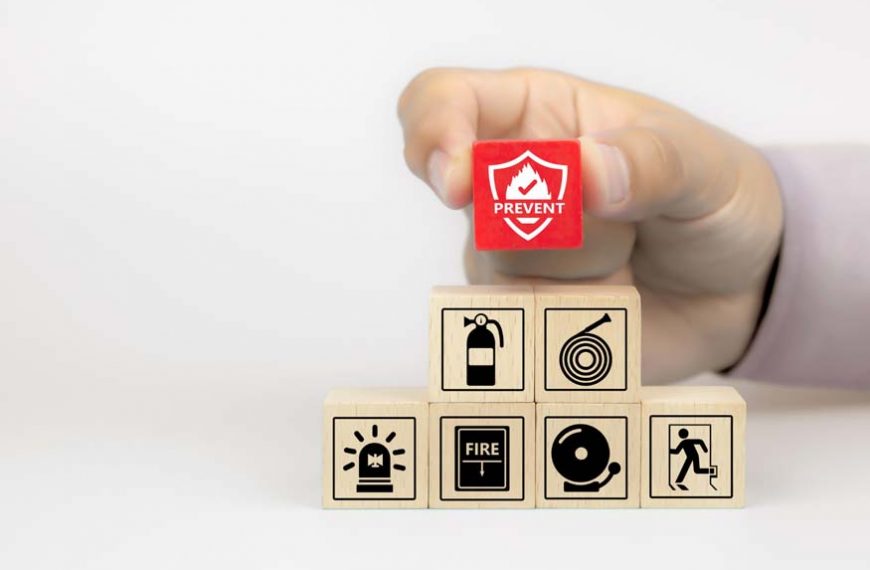Understanding Safety Symbols
Safety symbols speak a global language that cuts through linguistic, cultural, and age boundaries. These symbols work as visual signals to communicate crucial information regarding possible risks, safety measures, and the appropriate course of action in many contexts. Safety symbols are crucial in keeping us informed and safe on anything from construction sites to chemical laboratories to roads to our very own homes. In this blog, we will dig into the realm of safety symbols, learning about their definitions, names, and significance, as well as how integrating entertaining activities into the classroom may improve students’ comprehension of these vital symbols.
A picture may convey a great deal of data without the need for any words. Symbols and signs are effective means of communicating ideas nonverbally. Some symbols and signs are culturally specific, while others are universal in nature. Transport is one of these areas. Traffic signs and symbols communicate The regulations and limits to drivers, riders, passengers, and pedestrians. The use of these symbols and signs encourages safe and uncongested transport. Road safety and traffic laws are crucial topics, but pupils might not completely understand them.
WHAT ARE SAFETY SYMBOLS?
Safety-related warnings, precautions, and instructions are represented by particular pictograms called “safety symbols.” Even people who might not comprehend the language being spoken will be able to recognise and understand them because of their design. Frequently, these symbols are used with words to provide a thorough safety message that is both visual and informational. Safety symbols, like the ominous skull and crossbones on dangerous substances or the well-known exclamation point warning about a possible hazard, are intended to catch our attention and force us to take urgent action.
SAFETY SYMBOLS WITH NAMES:
Safety sign names should be understood just as much as the symbols themselves. With this information, people are better equipped to spot possible dangers promptly and take appropriate action. Let’s examine a few often-used safety symbols and their names in more detail:
- Flame Symbol (Flammable Material): The presence of materials that are easily ignited when exposed to an open flame or heat source is denoted by the use of this flame-themed symbol.
- Skull and Crossbones Symbol (Toxic Material): The skull and crossbones emblem is a universal representation of peril. It serves as a warning for compounds that might result in severe injury or even death if consumed, breathed, or absorbed via the skin.
- Biohazard Symbol: This symbol shows a circle with three overlapping arcs and is frequently used in medical and scientific contexts. It denotes the existence of biological risks to human health, such as infectious materials.
- Electrical Hazard Symbol: An exclamation mark enclosed in a triangle serves as the representation of the electrical hazard sign. It offers a warning about potential electrical risks that might cause electric shock or other harm.
- Radiation Symbol: This symbol has a trefoil shape and is frequently used to represent nuclear facilities. Ionizing radiation, which can be hazardous to human health, is indicated by its existence.
- Eye Protection Symbol: The eye protection sign emphasizes the necessity to wear protective eyewear in circumstances when eye injuries are possible by displaying a pair of safety goggles.
- Slippery Surface Symbol: This symbol represents someone falling and sliding. It frequently appears in damp or slick flooring locations, cautioning people to use admonish.
Knowing the names and meanings of these symbols enables people to react effectively when they come across possible risks. Particularly important are these skills in the business, in public areas, and even at home.
IMPORTANCE OF SAFETY SIGNS AND SYMBOLS:
It is impossible to exaggerate the significance of safety signs and symbols. They fulfill a number of vital functions that improve general safety, including:
- Quick Recognition: Safety symbols are intended to be instantly recognisable. These symbols can offer quick instructions on how to respond in emergencies where time is of the essence.
- Language Barrier Mitigation: People from various language origins encounter safety information in today’s multicultural society. Language limitations are overcome through safety symbols, ensuring that everyone is aware of the dangers and essential safety measures.
- Consistency: Safety symbols have standardized appearances and meanings, which establish a constant framework for communication in a variety of settings. This consistency improves understanding and lessens misunderstanding.
- Universal Application: Industry or culture has little bearing on the use of safety symbols. They are used in a variety of contexts, from industrial sites to domestic cleaning solutions, and are generally understood.
- Prevention of Accidents: Safety symbols aid in preventing accidents by clearly communicating instructions and warnings. They remind people of potential risks, motivate them to take the required safeguards and abstain from dangerous behavior.
SAFETY SYMBOLS AND THEIR USES:
Safety symbols are used in a variety of industries and settings. Let’s look at some such situations when safety signals are essential:
- Workplace Safety: Safety symbols are frequently employed in industrial settings to highlight possible machinery, chemicals, and equipment risks. Employees receive training to identify these symbols and comprehend the safety procedures needed to do their jobs.
- Roadway Safety: Traffic signs and symbols are prime examples of safety symbols in action. Symbols such as stop signs, pedestrian crossings, and speed limit indicators guide drivers and pedestrians, ensuring smooth traffic flow and minimizing accidents.
- Laboratory Environments: Safety symbols in scientific labs tell researchers about the makeup of substances, probable reactions, and necessary safety precautions. This is crucial for avoiding unintentional exposure to dangerous compounds.
- Public Spaces: Safety symbols are often used to identify emergency exits, fire extinguisher locations, and other crucial safety information in public areas like malls, airports, and parks.
- Educational Settings: To inform students about potential dangers and safety procedures, educational institutions like schools and universities include safety symbols in their curricula. This early exposure lays the basis for a safety-conscious attitude.
EDUCATION TO FUN GAMES: A PLAYFUL APPROACH TO SAFETY
While the importance of safety should never be downplayed, adding enjoyable activities to safety instruction can improve comprehension and recall. Gamification has been shown to be a successful strategy for engaging students and reiterating essential ideas. Here are some ways that entertaining games may significantly improve safety education:
- Increased Engagement: Games naturally have the potential to draw in players and keep them interested. Instead of being passive information consumers, learners take an active role in safety instruction by making it an engaging game.
- Memory Retention: Information retention increases when the learning experience is engaging and memorable. Safety symbols’ meanings can be better understood and remembered if they are connected to an interactive activity.
- Real-World Application: Games frequently mimic real-life situations, giving players a safe place to practice making decisions and solving problems. These scenarios have safety icons to teach players to recognise dangers and respond appropriately.
- Risk-Free Learning: Games provide students with a risk-free setting where they may make and grow from errors. This kind of safety teaching enables people to comprehend the effects of their decisions without really being at risk.
- Collaboration and Competition: Multiplayer games promote friendly rivalry and teamwork. Learners may discuss safety measures, exchange insights, and sharpen their comprehension of safety symbols by cooperating with or competing against others.
Our everyday lives would not be complete without safety symbols to help us navigate possible dangers and ensure our safety. It is impossible to overestimate their importance in disseminating critical safety information. We can provide people of all ages with the information and abilities necessary to properly navigate their surroundings by comprehending their names, realizing their value, and combining them into educational activities. Let’s keep in mind the importance of entertaining, engaging games in creating a safer society for everybody as we continue to embrace technology and cutting-edge teaching methods.
















